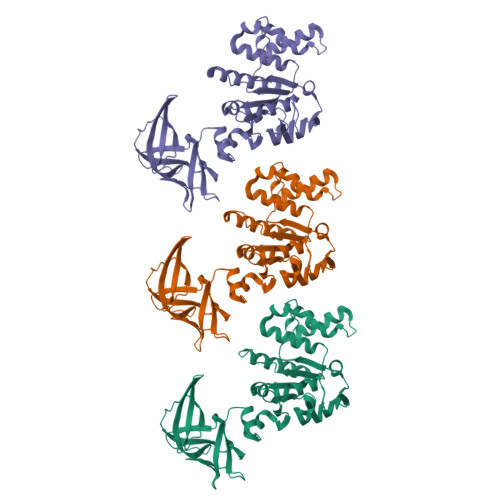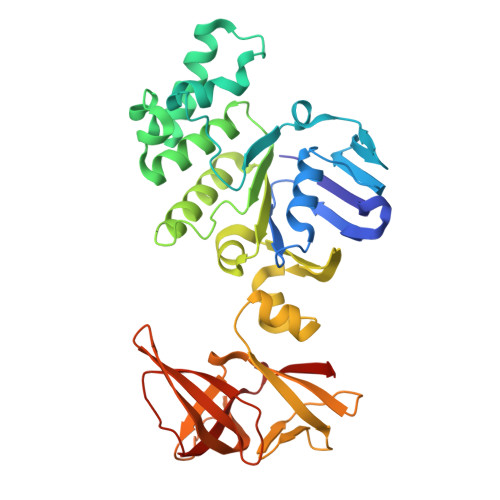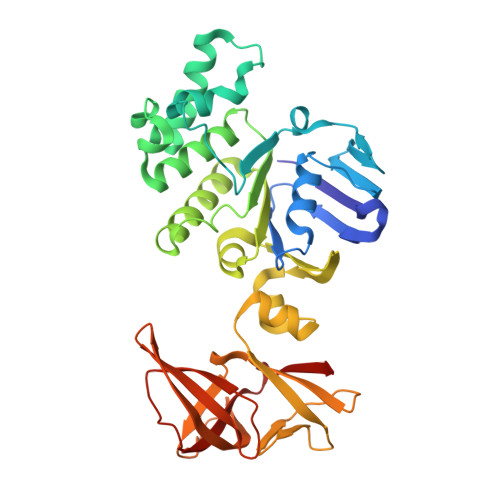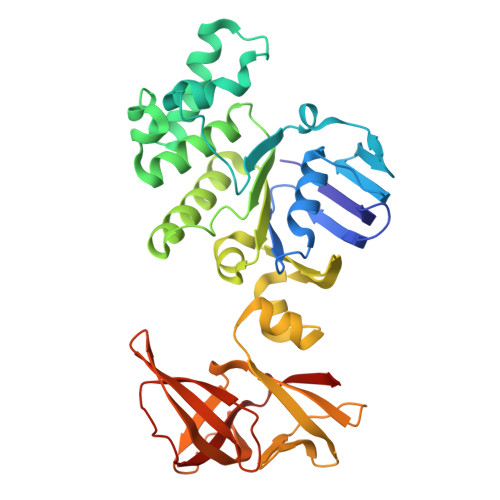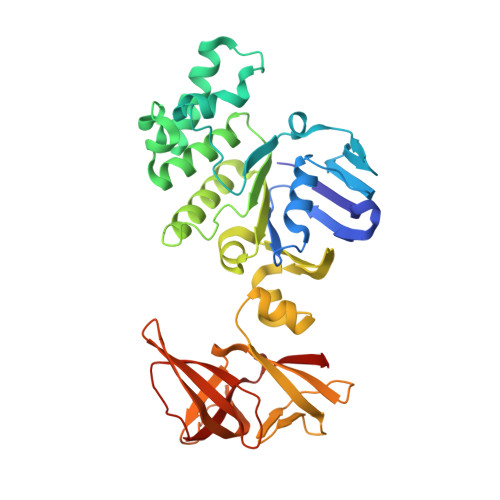Crystal structures of the ATPase subunit of the glucose ABC transporter from Sulfolobus solfataricus: nucleotide-free and nucleotide-bound conformations
Verdon, G., Albers, S.V., Dijkstra, B.W., Driessen, A.J., Thunnissen, A.M.(2003) J Mol Biology 330: 343-358
- PubMed: 12823973
- DOI: https://doi.org/10.1016/s0022-2836(03)00575-8
- Primary Citation of Related Structures:
1OXS, 1OXT, 1OXU, 1OXV - PubMed Abstract:
The ABC-ATPase GlcV energizes a binding protein-dependent ABC transporter that mediates glucose uptake in Sulfolobus solfataricus. Here, we report high-resolution crystal structures of GlcV in different states along its catalytic cycle: distinct monomeric nucleotide-free states and monomeric complexes with ADP-Mg(2+) as a product-bound state, and with AMPPNP-Mg(2+) as an ATP-like bound state. The structure of GlcV consists of a typical ABC-ATPase domain, comprising two subdomains, connected by a linker region to a C-terminal domain of unknown function. Comparisons of the nucleotide-free and nucleotide-bound structures of GlcV reveal re-orientations of the ABCalpha subdomain and the C-terminal domain relative to the ABCalpha/beta subdomain, and switch-like rearrangements in the P-loop and Q-loop regions. Additionally, large conformational differences are observed between the GlcV structures and those of other ABC-ATPases, further emphasizing the inherent flexibility of these proteins. Notably, a comparison of the monomeric AMPPNP-Mg(2+)-bound GlcV structure with that of the dimeric ATP-Na(+)-bound LolD-E171Q mutant reveals a +/-20 degrees rigid body re-orientation of the ABCalpha subdomain relative to the ABCalpha/beta subdomain, accompanied by a local conformational difference in the Q-loop. We propose that these differences represent conformational changes that may have a role in the mechanism of energy-transduction and/or allosteric control of the ABC-ATPase activity in bacterial importers.
Organizational Affiliation:
Laboratory of Biophysical Chemistry, Groningen Biomolecular Sciences and Biotechnology Institute, University of Groningen, Nijenborgh 4, 9747 AG, Groningen, The Netherlands.








